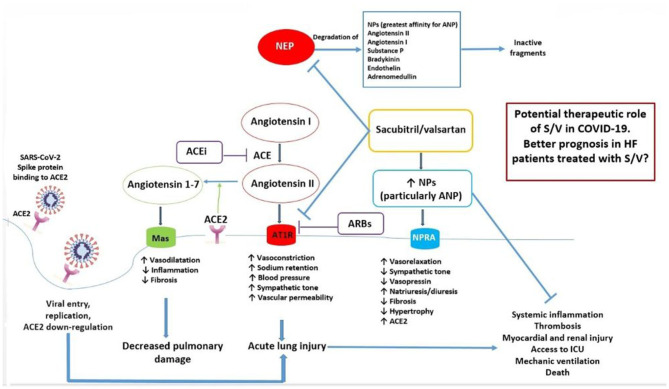Figure 1.
Mechanisms underlying the potential beneficial effects of sacubitril/valsartan in HF patients with COVID-19. Ang 1-7, produced by ACE2 from Ang II, and NPs, particularly ANP, may protect from acute lung injury, systemic inflammation, and adverse outcomes during SARS-CoV-2 infection. On the other hand, local activation of the RAAS system may mediate injury responses to viral insults. S/V inhibits both the AT1R and neprilysin, which degrades NPs. As a consequence, S/V may exert an important protective function from adverse clinical course, mediated by an increase of ANP and by AT1R blockade, in HF patients with COVID-19. ACE, angiotensin converting enzyme; ACE2, type 2 angiotensin converting enzyme; ACE-i, ACE inhibitor; ANP, atrial natriuretic peptide; ARB, angiotensin type I receptor blocker; AT1R, angiotensin type I receptor; HF, heart failure; ICU, intensive care unit; NEP, neprilysin; NPs, natriuretic peptides; NPR-A, natriuretic peptide receptor A; S/V, sacubitril/valsartan.

